Determining_IO_Amounts_and_PLC_Spacing.pdf
Additional Videos
- Control Panel Build Series: Part 10 - Design: PLC & IO Schematics
- Industrial Control Panel Build Series Part 4: IO Hardware Selection
- Panel Build Series Part 3: Planning IO Requirements Updated
- Industrial Control Panels in Depth Look Part 2: IO
Determining IO Amounts and PLC Spacing
How to determine the amount of IO for a specific job, and how much space is needed in the PLC you plan to use.
Steps
- Identify what IO you need to monitor or control
- Count all of these IO points and compile an "IO List"
IO List Includes
- Analog Signals
- Digital Signals
- Inputs or Outputs
- Other signal types
Sizing the PLC
- Once IO counts are finalized, you can size your PLC
- Ensure that each signal can be terminated into the proper PLC module
- It is best practice to make sure enough space is available for additional signals to be added at a later date
- Typically, 20% spare IO is best practice
Transcript
[0m:4s] Hi I'm Josh Bloom, welcome to another video in the RSP Supply education series. If you find that these videos are helpful to you, it certainly helps us out if you could give us a big thumbs up and subscribe to our channel.
[0m:16s] In today's video, we are going to be talking about how to determine the amount of IO that is needed for a specific job and how to figure out how much space is needed in the PLC that you plan to use.
[0m:30s] Also, we want to talk about if it is necessary to add additional space in the PLC to allow for future expansion of your system.
[0m:41s] If you haven't seen some of our other videos where we discuss how to determine IO for your control panel, we will link the video in the description below, as it might help you better understand the topics in which we will be discussing today.
[0m:57s] So when figuring out the amount of IO that is needed, you simply need to look at all of the different data points that you want to monitor and or control and account for each of those as you compile your IO list.
[1m:13s] The IO list is simply the list that has all of the separate points that are connected to the PLC.
[1m:21s] An example of some of these IO points might be an intrusion alarm, a high pressure set point,
[1m:29s] Flow, pressure, level, etc.
[1m:32s] As you compile your list, you will need to determine if each signal is either an input or output, as well as if each signal is an analog signal or digital signal, or possibly something else.
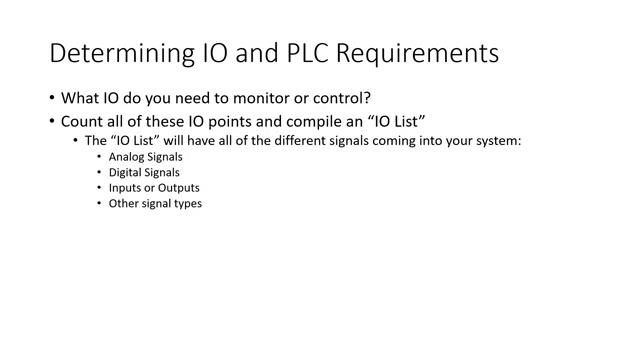
[1m:46s] Once you have your list fully completed, you are at the point where you can properly size your PLC.
[1m:52s] At the very minimum, you should size your PLC to make sure that all of the IO points on your list can be terminated into the PLC.
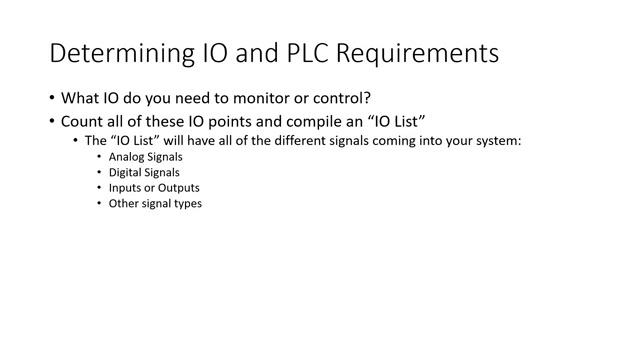
[2m:3s] However, this is not recommended when building a new PLC control cabinet.
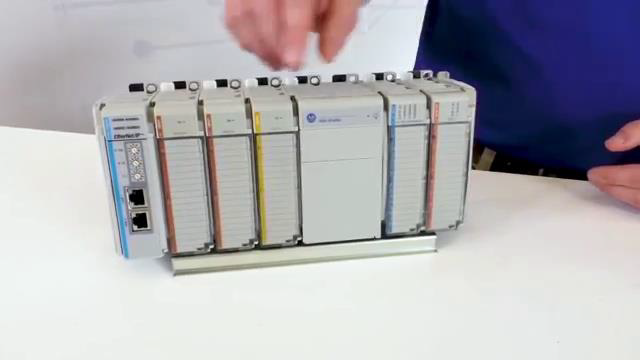
[2m:9s] It is best practice to make sure that you have additional room on the PLC for the possibility that more IO points could potentially be added at some point in the future.
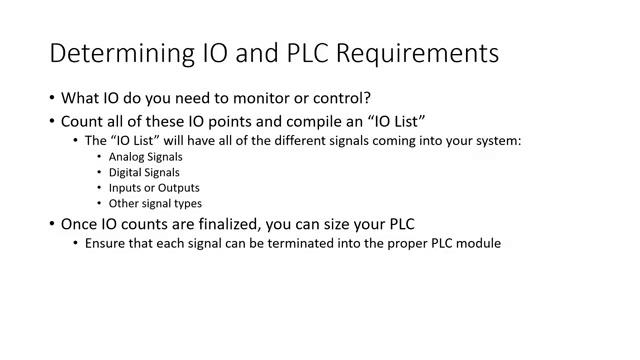
[2m:22s] Adding this spare IO is a great idea when planning and designing your control system.
[2m:29s] In many cases, the customer may specify the amount of additional IO that is required for your build.
[2m:38s] If no specific amount is actually required, it is recommended that at least an additional 20% of IO space is available.
[2m:48s] One thing that should be considered when adding this additional space is that you add additional space evenly across all different signal types. For example,
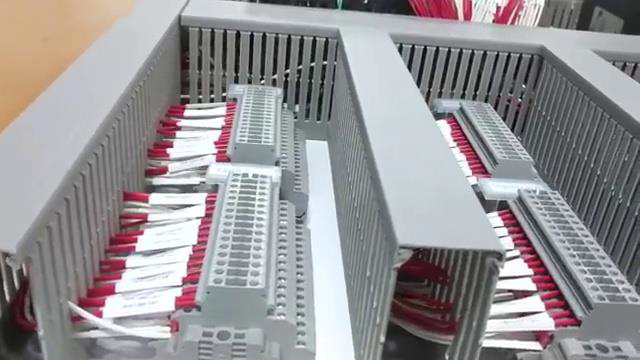
[2m:59s] if you have 10 digital inputs, you would typically have an additional two digital inputs that are not being used.
[3m:6s] If you have 20 analog inputs, you would then have an additional four analog inputs available that would not be used.
[3m:14s] So again, make sure your spare IO is added across all signal types evenly. This will ensure that your system is sized properly for any future projects.
[3m:27s] By taking some extra time during the planning stages when designing your control system and adding this additional IO will lead to a much better system overall. It allows the customer the flexibility to change or adjust the system if they need to.
[3m:44s] Again, this is just best practice and is not required, but is highly recommended for any well-designed control system.
[3m:53s] For a full line of industrial control panel hardware and thousands of other products, please go to our website. For more information or other educational videos, go to RSPSupply.com, the Internet's top source for industrial hardware. Also, don't forget: like and subscribe.




